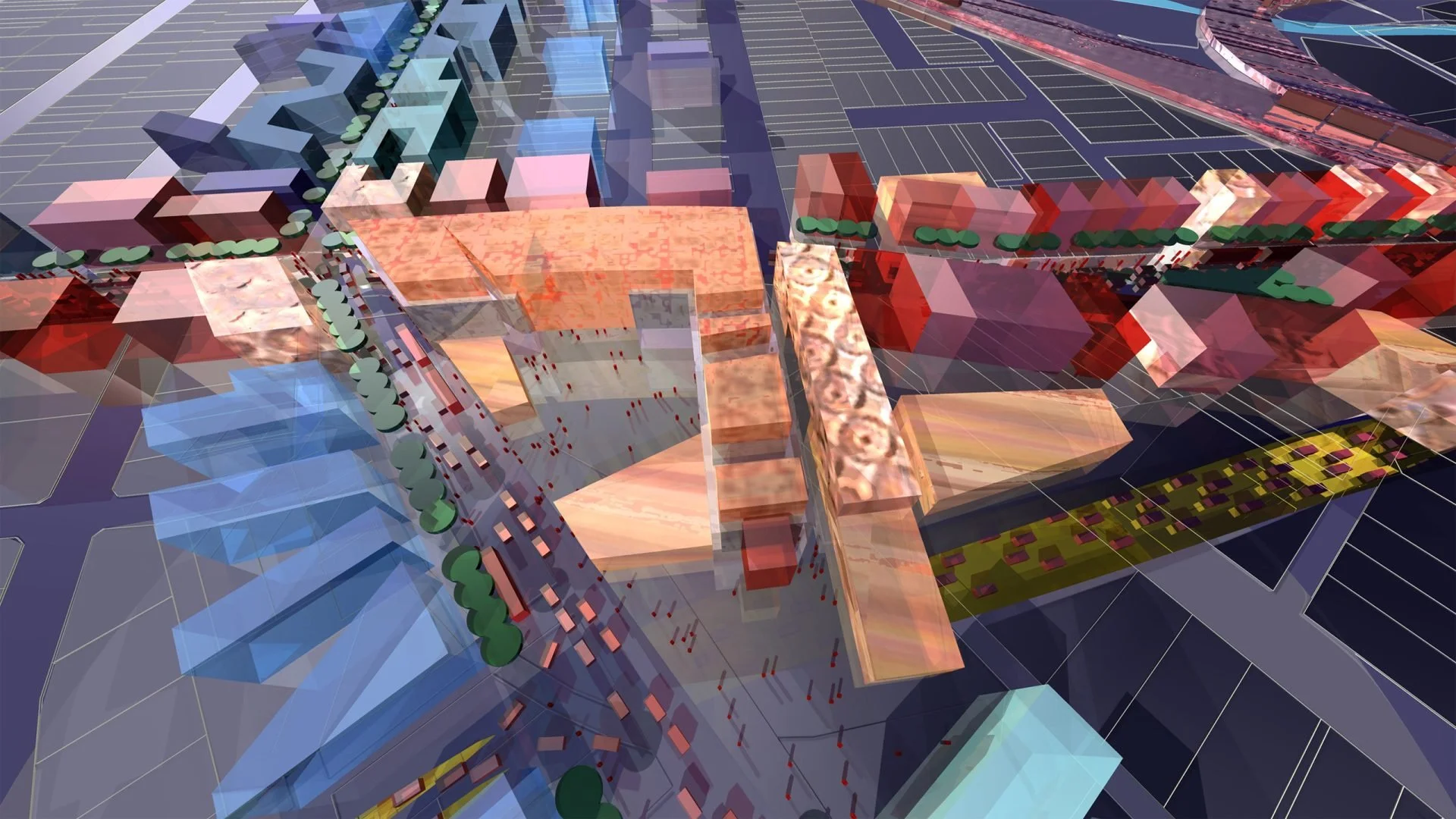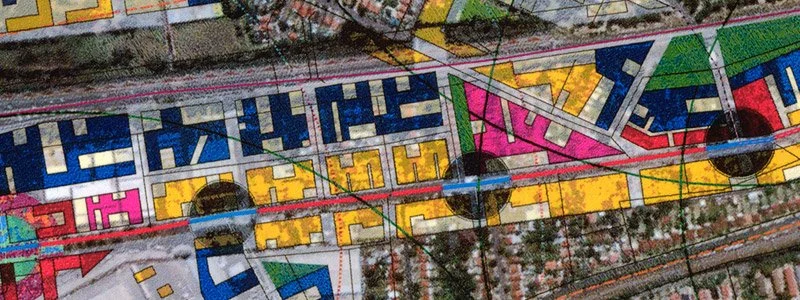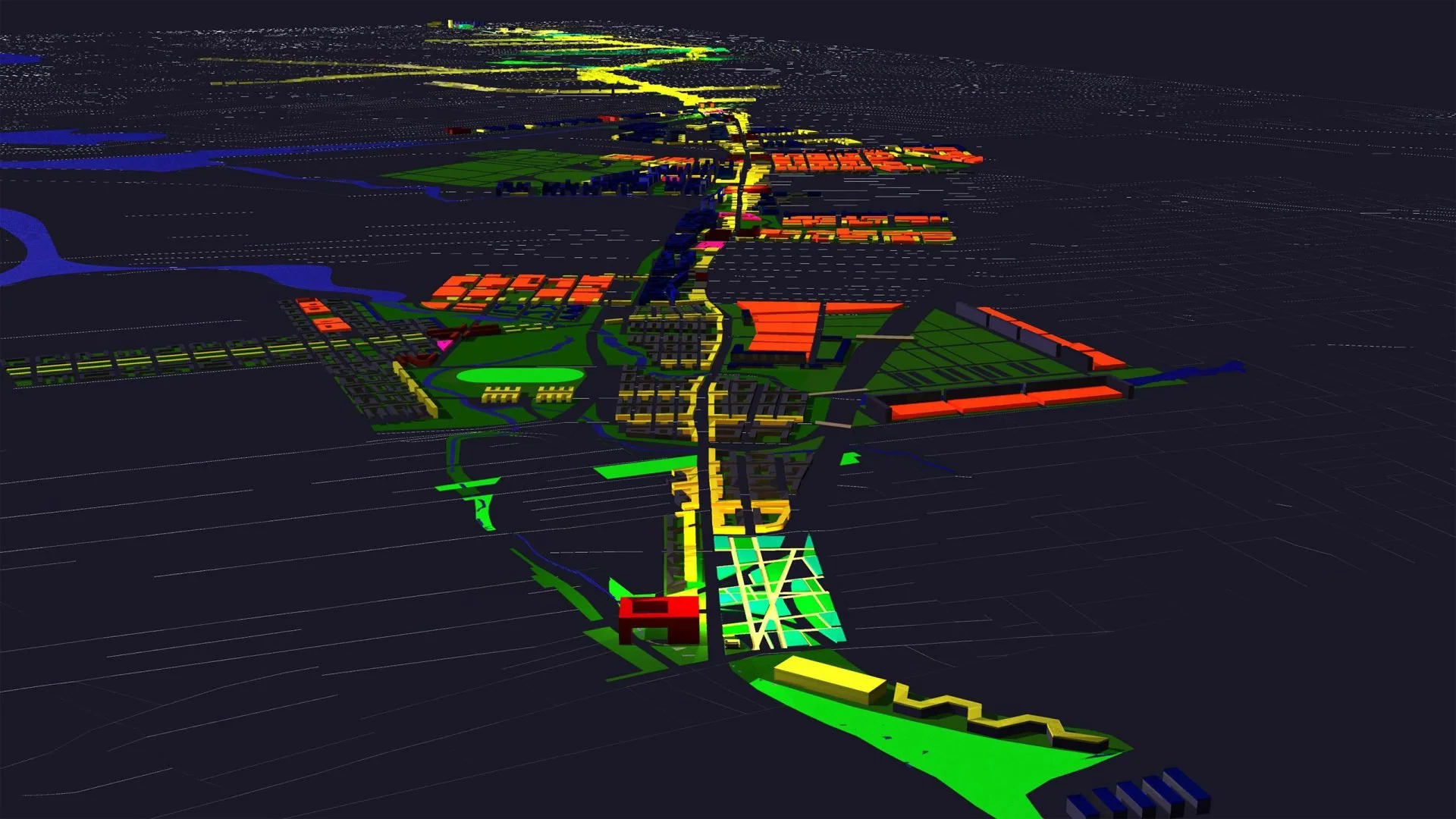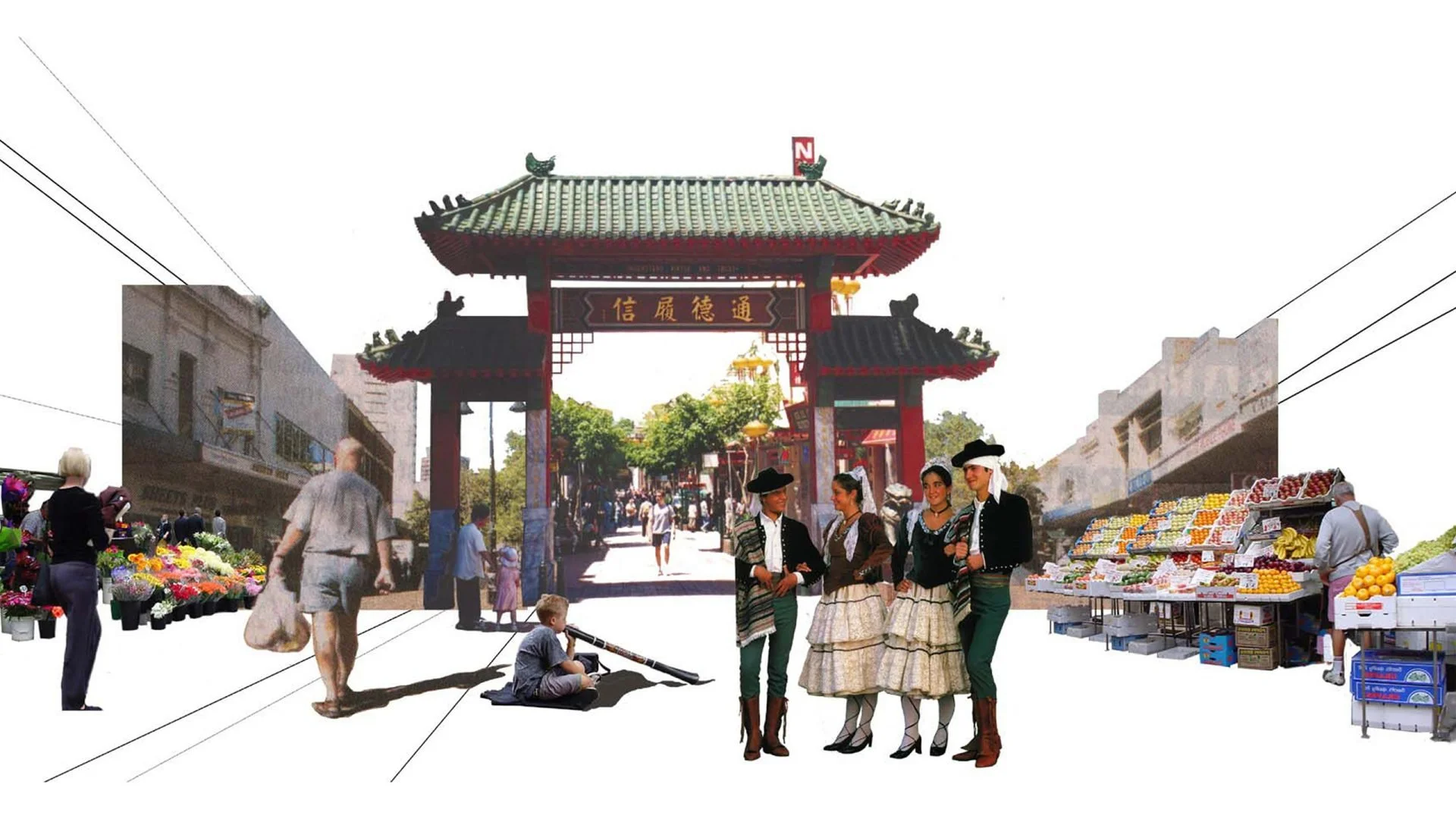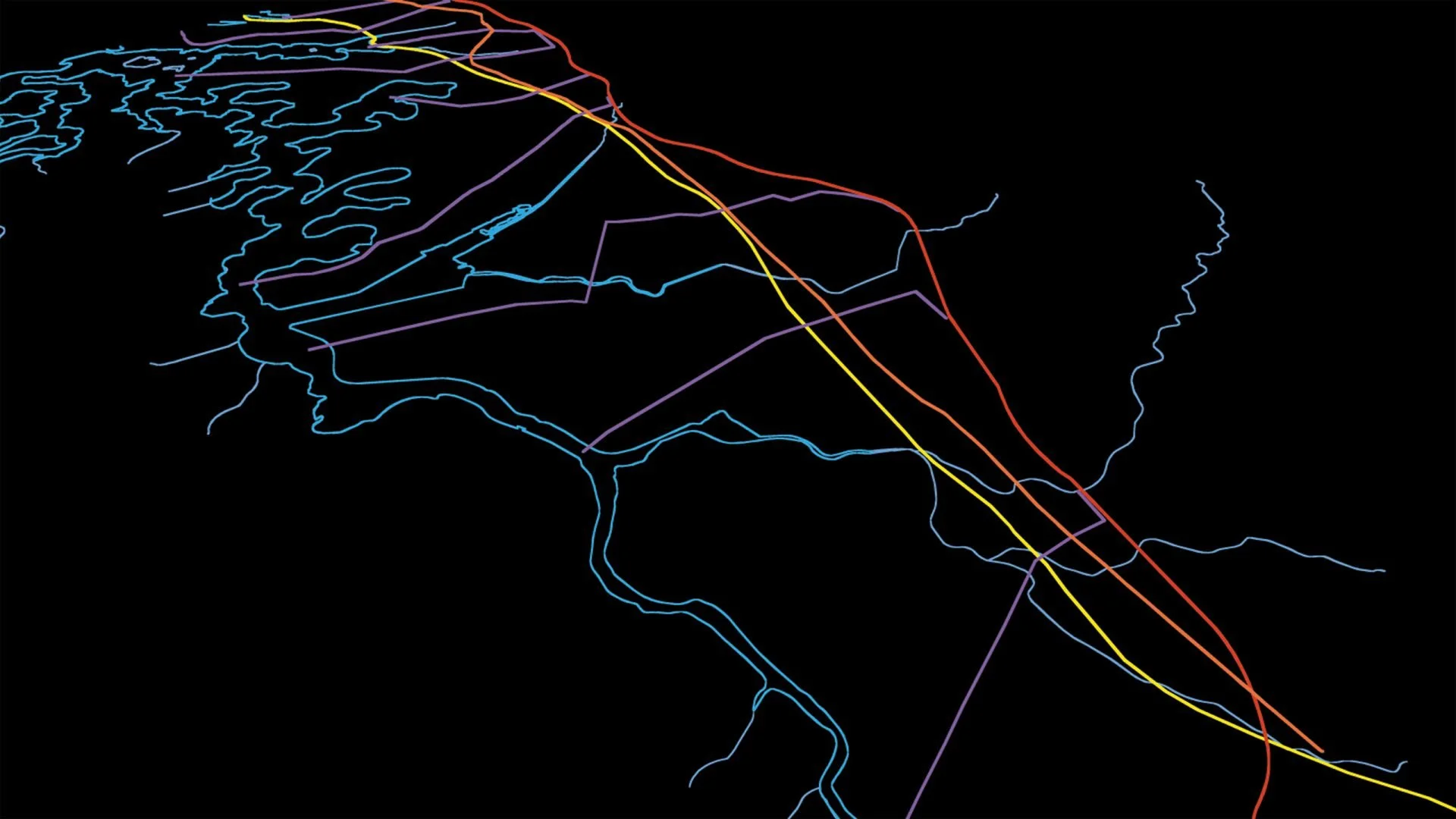SydneyCentral Strategic Plan
AWARDED - 2001 Parramatta Road Urban Renewal Masterplan International Design Competition Winner
This ambitious and visionary urban-transformation project for Sydney was commissioned on the back of a major international design competition win. Our team SydneyCentral joined a consortium of architects, landscape architects, transport planners and land economists including CHROFI, McGregor + Partners and Stanisic Associates for the initial design competition.
The “Missed Opportunities” entry submitted by our team condensed an eight-panel presentation of research, drawings and diagrams down into a compact coffee-table booklet. We then used the lexicon of the road – a giant billboard, equivalent to the eight-panel submission requirement – to get our key message across. Parramatta Road was a MISSED OPPORTUNITY for Sydney.
The Parramatta Road Strategic Plan was structured around urban, environmental, cultural and economic strategies that were superimposed and integrated along the corridor. Six precincts were then established, existing conditions interrogated and precinct-specific strategies established in response to local opportunities. Design proposal strategies were then developed as a demonstration for three large-scaled demonstration sites in the corridor.
The competition-winning submission. A giant billboard to get our single, key message across – Parramatta Road is a MISSED OPPORTUNITY for Sydney. Copies of the accompanying booklet sat at the right-hand side of the billboard.
The international competition short listed MVRDV and Ken Yeang and was won by SydneyCentral.
The contextual area for the plan is bounded by the Parramatta River, the Great Western Rail Line, and the two central business districts Parramatta and Sydney. The Parramatta Road Strategic Plan presents a strategic vision with the aim of improving social, environmental, and economic conditions along the corridor. A series of reflective and somewhat provocative questions raised within the document provide a lens through which the project team envision massive change.
How much does existing loss of amenity cost the residents of the area?
How much have small retailers paid for their loss of business?
The ecology of an entire region. How much does that cost?
The indigenous peoples of the area and their descendants have surely paid the highest price of all. Who could ever repay them?
Can Sydney be more than the harbour?
Parramatta vision
Parramatta Road, like William Street, has deteriorated to such an unresolved and unlovable condition that it is periodically proposed as a candidate for a makeover. Fanfares are sounded, plans produced with a flourish, but nothing happens on the ground. As the proponents of the latest scheme shrewdly observed, Sydney’s obsession with its eastern harbour frontage relegates the city’s demographic heart to little more than a dumping ground. In the past 15 years, Circular Quay has been reworked at least twice but the neglect of Parramatta Road has continued.
The latest scheme, however - the result of an international competition won by a local consortium of Stanisic Associates, Choi Rophia Architects and landscape architects McGregor Partners - provides not only a seductive vision of what could be but also a number of practical initiatives. These include enhanced transport strategies, “shop-top” housing, the creation of public spaces and the provision of cultural facilities. All are achievable, given the right political mindset within the scheme’s target date of 2020.
The SydneyCentral team, as the consortium called itself, poses a serious and fundamental question: Can Sydney be more than the harbour? It would be difficult to argue with their proposition that at present, the city’s west is little more than a disadvantaged, alienated suburbscape, with Parramatta Road representing 23 kilometres of decay and unrealised potential, smack in the middle of the demo- graphic heart of Sydney.
Any concession of the harbour-centric view of Sydney would be to the benefit not only of the west but also of the overhyped and overwrought metropolis on the harbour. Last year's scheme for a “coffee table” enlargement of the Museum of Contemporary Art at Circular Quay was symptomatic of the insane insistence on maximising the returns on every available piece of harbourside land, often to the detriment of the harbour itself and its built surrounds. With that in mind, Sydney Central’s slightly tongue-in-cheek suggestion for a Museum of Contemporary Art at Granville allows an appealing logic.
The major stumbling block to the planners' makeover will always be Sydney’s notorious dependency on the private car and here the SydneyCentral team proposes upgrading rail and ferry services, providing a light rail service and futuristic rapid transit lanes for buses along the M4 as well as providing for medium and high-density development to extend outwards from the railway stations. If that seems overly idealistic, it is worth remembering that research last year by the University of Sydney’s Warren Centre showed that politicians, bureaucrats and local government officials overestimated the public’s faith in roads and freeways as the solution to traffic congestion. Seventy-three per cent of respondents to the survey said there was not enough investment in public transport.
Sydney Morning Herald Editorial, Australia Day 2002 - Editor-in-chief, Alan Revel, 201 Sussex Street, Sydney 2000.
The Parramatta Road Strategic Plan received widespread support as captured in the following acknowledgements:
The Committee is very impressed with the proposed SydneyCentral concept for Parramatta Road. The creation of a new focus for transport friendly urban development along the Parramatta Road corridor offers an opportunity to accommodate a large portion of Sydney’s future growth in a highly accessible location. – Nick Juradowitch, Chairperson, Royal Australian Planning Institute (NSW) Metropolitan and Environment Committee.
A visionary document that will redefine Sydney in the twenty-first century. – Regina Sonnabend, Co-ordinator Serve City Project, Bauhaus Dessau Foundation, Germany.
Project: Parramatta Road and Strategic Plan
Type: Urban Design, Masterplan
Description: Visionary Renewal Document for Transport, Urban, Environmental, Cultural and Economic strategies deployed over 6 precints.
Location: Central Sydney, NSW.
Year: 2000-2002
People: Adam Russell and Jason Fraser [as Vim Design]
Collaborators: Choi Rophia, Michael Garbutt, McGregor + Partners, Stanisic Associates, Hill PDA, The Revolution, TTM, King and Campbell.
Client: IMROC [Inner Metro Regional Councils], NSW RTA, STA and Planning NSW.
Data: International Competition, 1st Prize.
Area: 23 km of road / 11,500 Ha of land
Value: $5.0B plan over 20 years
Services: Competition, Strategic Plan (Draft)
Download: Parramatta Road Strategic Plan 12.6 Mb PDF
Project code: 0107

